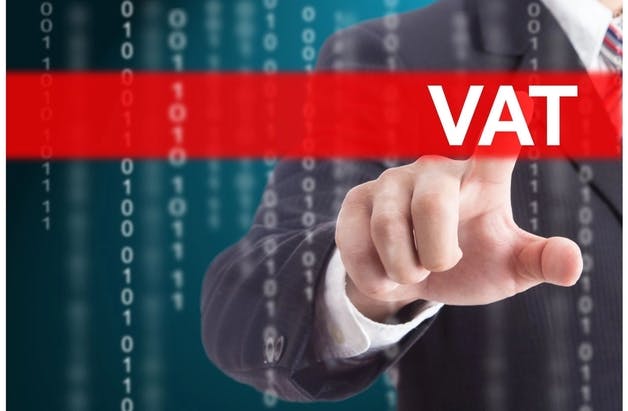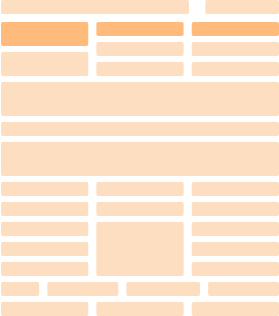What is VAT? Definition and Examples

January 06, 2023
As of the date of this article, more than 170 countries, including all of the EU countries, have a value-added tax (VAT) on goods and services. But what is VAT exactly, and how is it levied?
VAT is a form of tax that each party in the supply chain has to pay, including the manufacturer, retailer, wholesaler, and finally, the customer. Each country has different VAT rates, rules, and regulations, and in this article, we’ll cover every important aspect of this tax system.
Without further ado, let’s answer what VAT is!
What is VAT Tax?

Most commonly found in European Union (EU) countries, VAT is a type of indirect tax on goods and services added at every point of distribution or production cycle. Also known as goods and services tax (GST), VAT is charged equally on every purchase.
The tax is payable by the final consumer of the good or service, and each party in the chain of supply of a service or a product is a VAT collector. Generally, in most countries that impose VAT, the tax payable is 10%.
Although it was implemented more than a decade ago, VAT is still a tax that remains somewhat controversial. Some say that it’s a type of regressive tax that burdens lower-income consumers while simultaneously being a bureaucratic burden for businesses.
How Does VAT Work—Example

Understanding VAT might initially seem difficult, but don’t worry—we’ve got you covered!
Essentially, VAT is charged for the gross margin at every part of the manufacturing process. It’s assessed and collected at each step of the way, which is what makes it different from a sales tax system that the consumer pays at the end of the supply chain.
The best way to get a grasp of VAT is to take a look at an example of a popcorn supply chain in a country where this tax is 10%:
- Let’s say that a farmer grows his crop and sells the corn for $10 to a company that puts it in labeled packaging. Even though the price is $10, the company buying the corn will have to pay $11 because the VAT is 10%.
- Then, the company sells the packaged corn to a cinema for $15, but the cinema has to pay $16.50 due to the VAT.
- Lastly, the cinema will make popcorn from the purchased corn and sell it for $20 + $2 (10% VAT).
Even though it might seem insignificant, VAT raises around 30% of the country’s tax revenue.
Value-Added Tax (VAT) History
The first countries to introduce value-added tax (VAT) were Germany and France. The first variation was proposed in Germany by a German industrialist, Wilhelm von Siemens, in 1918.
The modern version of VAT, on the other hand, was first implemented in the Ivory Coast colony in 1954 by Maurice Lauré, a member of the French Tax Authority. He then observed the experiment, and after its success, the French government decided to start charging VAT for good.
The main concept behind VAT is that it was intended to tax large businesses, but it extended to all business sectors over time. In fact, it’s one of the most important sources of state finance in France.
Nowadays, most countries in the world that belong to the Organization for Economic Cooperation and Development (OECD) have VAT in place. One of the most notable exceptions to VAT is the United States.
VAT in the United States of America
When it comes to VAT in the U.S., it has been debated whether it should be put into place instead of the current income tax system.
Namely, VAT advocates think that the country could see many benefits from such a system, as this could increase government revenue, reduce the federal deficit, and help with social services funding.
In an economic study on VAT conducted by the Congressional Budget Office (CBO) in 1992, it was concluded that VAT would add only $150 billion in annual state revenue. This is 3% less than the national output and comes to roughly $297 billion when adjusted to 2022.
Judging by these approximations, it could be said that VAT could raise anywhere between $250 and $500 billion in government revenue. However, such a tax system would change the whole production process in the U.S., as not all companies could handle the increased costs. For this reason, this option isn’t as favorable as expected in this territory.
Difference Between VAT and Sales Tax

Now, you might be wondering what the difference between VAT and sales tax is. Although the two might be similar, they differ in that sales tax is only paid once. On the other hand, VAT is collected several times during the production of a product.
Both taxes are capable of raising the same amount of government revenue. Yet, the difference is that the VAT is paid throughout the production process, whereas the sales tax is paid at the beginning of the sale.
Even though this way of tax collection for the VAT system might be confusing at first, it comes with one big benefit over sales tax. Namely, VAT allows you to track it easily, as each tax for every step of the production is transparent. This is not the case with sales tax since it’s difficult to allocate it to specific stages of production.
Pros and Cons of VAT
There is no definite answer to which is better: VAT or sales tax. When it comes to the VAT system, there are multiple considerations to be taken into account when reflecting on this tax system. It has many advantages and disadvantages, which we’ll go over in the section below!
VAT Pros
First things first, let’s start with the pros of VAT.
#1. Increased IRS Efficiency
One of the biggest benefits of VAT is the simplified tax code, which would increase the efficiency of the Internal Revenue Service (IRS). This is mainly because of the transparency during every production step.
On top of that, VAT would also make it harder to avoid paying taxes, as it’s charged more frequently.
#2. More Money for the Taxpayers
Besides making it easier for the IRS to do its job, the VAT also gives people an incentive to earn more. This is because companies don’t have to spend as much money on taxes, as they are only taxed when selling goods.
VAT Cons
Nothing in life is perfect, and neither is VAT. Let’s check out its disadvantages!
#1. More Complex Bookkeeping
Yes, VAT does make the IRS' job easier, but it also makes bookkeeping a bit more complex for business owners. They will have to calculate every step of their production process, record sales, track prices, etc.
Bookkeeping also becomes even more complex for companies that work on an international level. Such firms will have to take into account shipping, extra fees, and many other variables.
#2. Smaller Business Can Evade Taxes
Tax evasion is one of the biggest problems related to the implementation of VAT. Smaller and medium-sized businesses can easily evade taxes, which doesn’t do justice to the IRS.
For example, business owners can offer their customers products or services at the original price, without the VAT tax included, if they don’t provide them with a receipt. This way, they can avoid charging them the extra 10%.
#3. Higher Overall Prices
At the end of the day, it’s customers who benefit the least from VAT.
Let’s say that such a system gets implemented in the U.S., which would mean that everyone would have to pay an extra 10% for whichever items they’re purchasing. In theory, VAT spreads both company and customer tax burdens, but customers might have it a bit harder, as it’s them who are paying.
How Does VAT Refund Work?
Non-resident visitors in countries with a VAT system are eligible for a tax refund on specific items, such as clothing, art, jewelry, etc. What this means is that you can shop tax-free whenever you visit a VAT country as a tourist.
To be eligible for a VAT refund, you must keep your receipts or any other forms of proof of purchase. Then, you have to fill out some paperwork at the airport once you’re leaving the country, and you’ll be good to go.
Keep in mind that the VAT refund is usually mailed in domestic currency, but you can receive it at the airport if it's a larger area.
Value-Added Tax (VAT) FAQ
#1. Is there a value-added tax (VAT) in the U.S.?
No, the U.S. doesn’t impose VAT because every state in the country has its own sales tax regime. This means that the implementation of the VAT system in the U.S. would require all 50 states to come to the same agreement.
#2. Who benefits from VAT?
If sales or income tax were to be replaced with a VAT system, wealthier consumers would be the ones who would benefit the most from it. On the other hand, lower-income consumers would have to pay a higher percentage of their earnings in taxes with a VAT system in place.
#3. What are the downsides of VAT?
The biggest downsides of VAT would be more complex bookkeeping, more tax evasion opportunities, and higher overall prices of goods and services.
#4. How can VAT be improved?
VAT could be improved if the government excluded tax on household goods, food, medicine, etc. This way, people wouldn’t have to pay 10% for items that are considered necessities.
Final Thoughts
Overall, VAT is a system with many benefits and drawbacks, and whether it would do any justice in the U.S. is hard to say. More than 170 countries worldwide use it, but we’re yet to see whether it works out in the long run, as it’s a relatively new tax system.
Hopefully, this article has helped you get a better grasp of VAT and shown you how to use your refund whenever you’re visiting a VAT country.
If you need help with filing taxes in the U.S., feel free to check out what we have to offer. We can generate customized W-2 forms, 1099-MISC, invoices, and any other documentation you need to provide the IRS with!
Key Takeaways
- VAT is a type of indirect tax for goods and services, added at every point of distribution or production cycle and charged equally on every purchase.
- The first countries to introduce value-added tax (VAT) were Germany and France.
- The U.S. uses a sales tax system instead of VAT, as it would be hard to have an equal VAT policy for each of the 50 states.
- The biggest benefits of VAT are increased IRS efficiency and lower tax costs for companies.
- If you’re a non-resident visitor in a VAT country, you are eligible for a refund on specific items, such as clothing, art, jewelry, etc.


